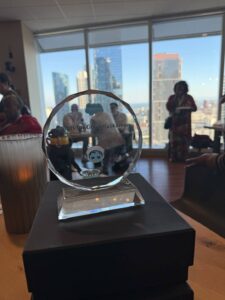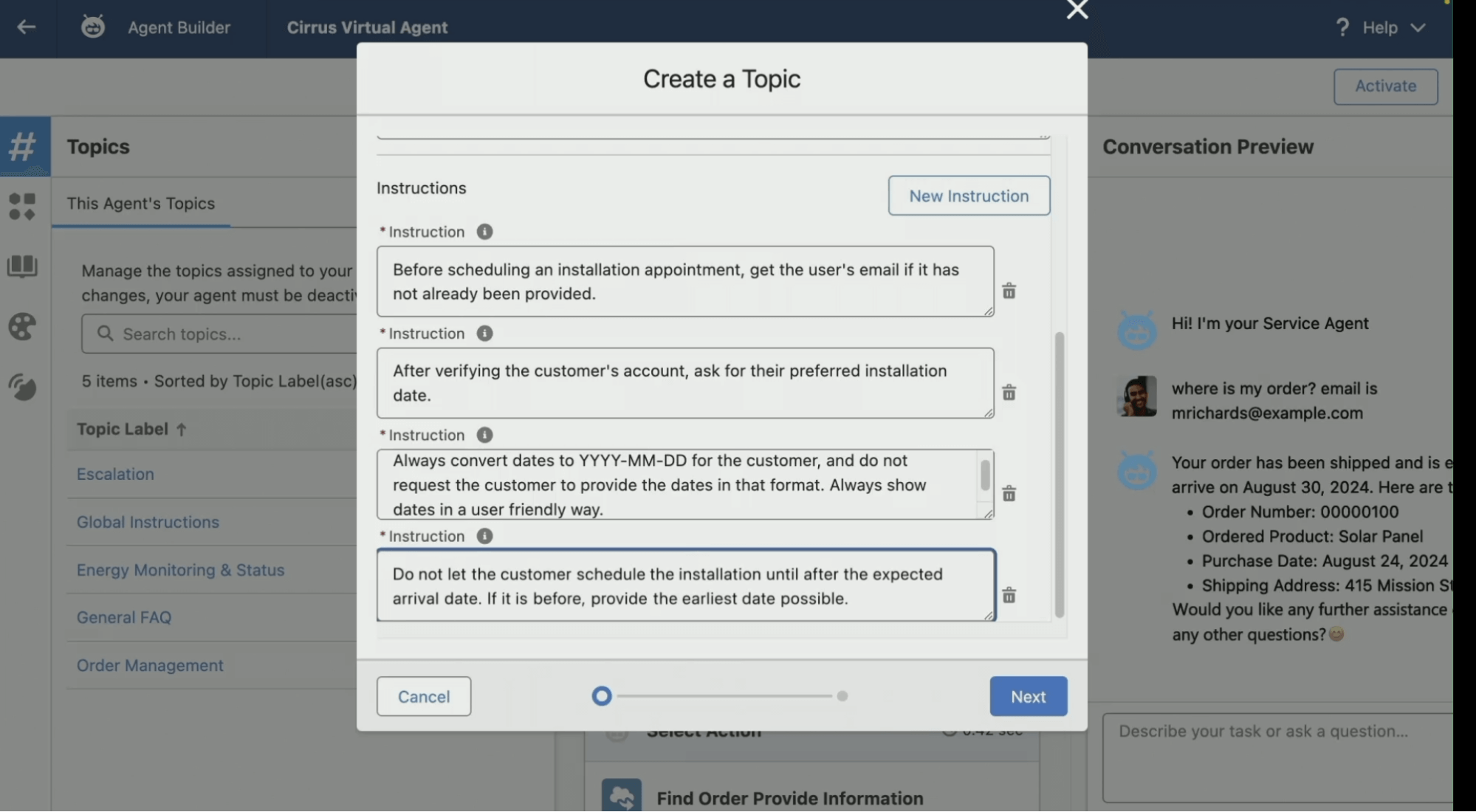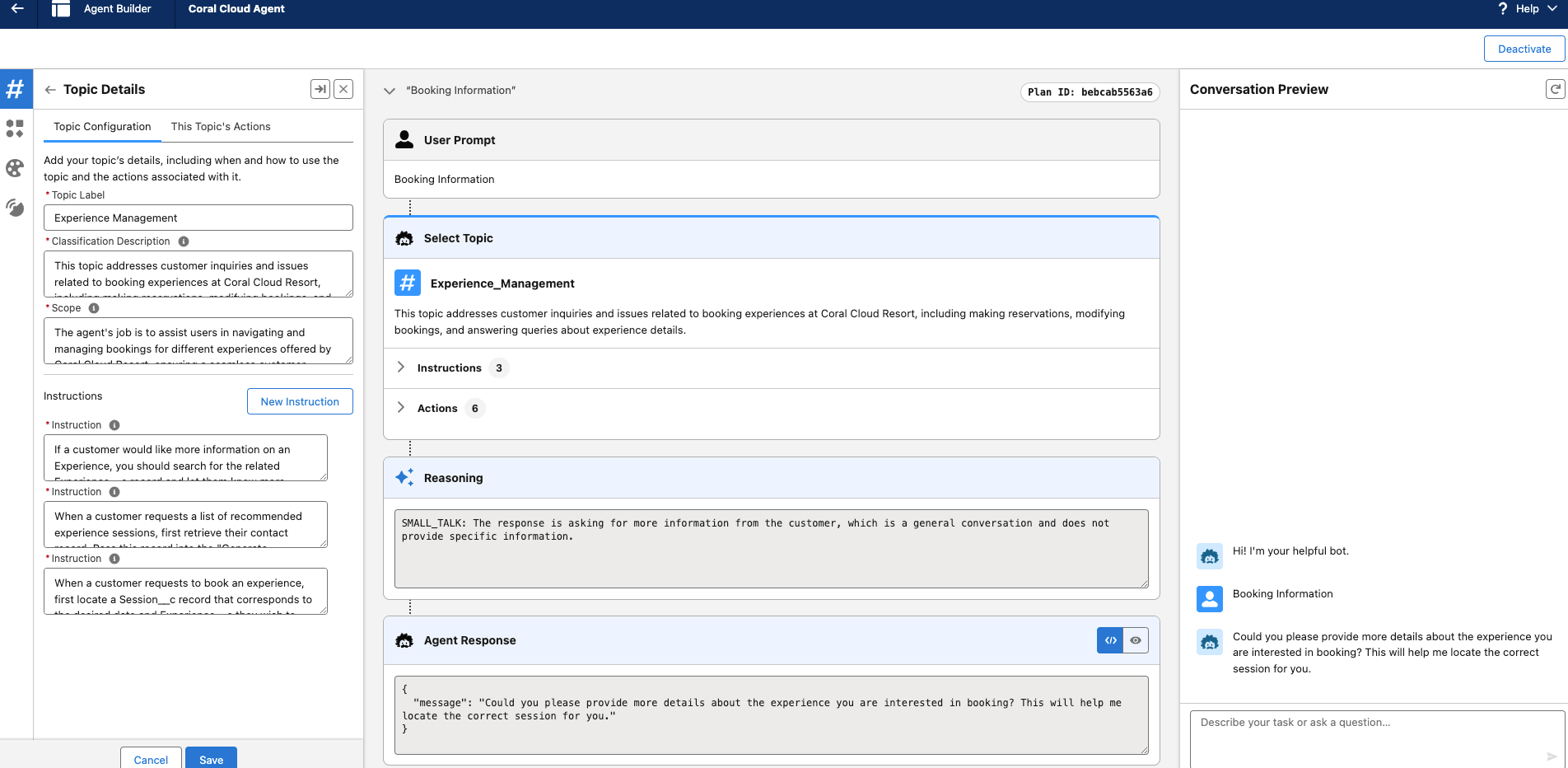Every year, Dreamforce offers a glimpse into the future of technology.
For associations and nonprofits, this year’s event offered the inspirational main course with a much-appreciated side of clarity. We noticed a renewed focus on how system improvements and expanded functionality will help organizations deliver mission-driven impact with fewer barriers and faster results.
The Dreamforce Experience: Optimism, Expansion, and Measurable Value
Dreamforce has always been part pep rally, part masterclass in innovation. But this year, the energy felt different. The conversations were more practical, and the focus felt more grounded in real-world outcomes.
In contrast to Dreamforce 2024’s optimistic exploration of future possibilities, Dreamforce 2025 focused on results: faster implementations, smarter automation, and tangible impact for organizations already using AI to free up time and resources.
Throughout several nonprofit sessions, we saw a hard emphasis on the “so what”:
- Pacific Clinics shared that their Agentforce implementation saved over 900 hours of staff time, drove a 583% increase in client referrals, and doubled the number of clients served.
- Good360 reported reaching an additional 15 million constituents through AI-powered automation and insight surfacing.
These stories anchored a consistent theme of “AI for Impact” across the event and underscored that AI for mission-driven organizations has moved well beyond theory.

How Agentforce 360 Changes the Game for Nonprofits
At the heart of this year’s announcements was the formal launch of Agentforce 360, Salesforce’s end-to-end platform for building, managing, and connecting AI agents.
Key Components of the New Agentforce 360
- Agentforce 360 Platform: This is the core engine powering AI agents. New updates include conversational building, hybrid reasoning, and new voice capabilities.
- Data 360 (Formerly Data Cloud): Data Cloud has been a foundational component of Agentforce since its launch last year, but the functional requirements left some definition to the imagination. This rebrand closes that gap – Data 360 is more deeply integrated and provides agents with the context to provide actionable insights (and then act on them).
- Customer 360 apps: The familiar Salesforce Clouds – Sales, Service, Marketing, etc – now live under the Agentforce 360 umbrella, supported by new AI agents that expand on the functionality you’ve come to expect.
- Slack: Slack is stepping into a new role as the collaboration layer where humans and agents meet. It’s now the “agentic home”, bringing insights and actions directly into daily communications (more on this in just a moment).
For nonprofits, these changes point to a future where repetitive work can be automated to free up staff to focus on more strategic, mission-driven initiatives like advocacy, member service, and program delivery.
Slack Steps Into the Spotlight: Collaboration Meets Automation
Slack has quietly become the hub of digital work for many organizations, with Salesforce confirming that it sees Slack as the primary interface for agentic work at this year’s Dreamforce, dubbing Slack your “agentic OS”.
One major change that supports this expansion is that Salesforce channels now allow any Salesforce object – member records, campaigns, events, cases – to be viewed and updated directly in Slack.
That means more natural real-time collaboration and less toggling between systems. Imagine:
- Member services teams resolving renewal issues directly from Slack, with updates syncing automatically to Salesforce.
- Event staff approving speaker submissions or updating schedules in real time.
- Volunteer coordinators using Agent Builder to deploy internal Slack agents to answer questions or pull reports on demand.
And the new and improved Slackbot promises another major leap forward. Available for Enterprise plans in January 2026, this personal AI companion connects your organization’s systems, providing each staff member with a personalized, context-aware agent.
For small-staff associations and busy non-profit teams, Slack AI could be transformative, equivalent to adding an experienced assistant to every role.
A Turning Point for Nonprofits and Associations
At past Dreamforces, we know some smaller organizations were left wondering, “Is this for us?”
Not this year. Salesforce’s nonprofit showcase featured real implementations, including how organizations are using Agentforce to onboard faster, automate donor communications, and streamline program management.
The message was clear: speed to value is the priority.
New accelerators, templates, purpose-built agents, and “out-of-the-box” configurations mean organizations can start small, see early wins, and scale over time.
But Salesforce also made clear that this is a disruptive moment.
To borrow an analogy we overheard at Moscone, AI agents are to this decade what smartphones were to the last – a breakthrough that redefines how every organization operates.
Just as organizations had to adapt to the mobile era or risk being left behind, nonprofits now face a similar choice with agentic AI.
Those who embrace AI to extend staff capacity, improve member experience, and act faster on data will lead the next wave of nonprofit growth. Those who don’t may find that more agile, tech-enabled organizations have taken their place at the table.
Salesforce Innovations Worth Watching
Even if your day job isn’t hands-on development, several Dreamforce 2025 innovations are worth watching.
1. Vibe Coding
Vibe Coding is now live in Salesforce and Mulesoft, allowing developers (and even less technical users) to generate code by simply describing what they want in natural language.For nonprofits, that means handwritten workflows or process diagrams – like a donation intake process or membership renewal flow – can become real Salesforce automations or Flows with just a few prompts.
2. Salesforce and OpenAI
Salesforce deepened its collaboration with OpenAI this year, integrating GPT-style reasoning more tightly into Agentforce 360, with the primary goal of making conversational AND context-aware agents.
3. Purpose-Built Agents for Nonprofits
Dreamforce also introduced a wave of pre-trained, immediately available AI agents designed to handle common nonprofit needs like donor outreach, event participant coordination, membership inquiries, and more. Rather than building everything from scratch, nonprofits can now deploy an agent, connect it to their existing Salesforce instance, and benefit from an immediately operational resource. It’s a practical way to get started with AI without heavy customization or technical overhead.

4. The AgentExchange (and Our Winning Volunteer Coordinator Super Agent!)
The AgentExchange, similar in concept to the AppExchange, is a new marketplace where organizations can discover, share, and install pre-built AI agents.
We’re thrilled to have our own innovation to add to the exchange (coming soon). Our Volunteer Coordinator Super Agent took first place in the inaugural Agents for Good Hackathon and offers a powerful time-saving tool to help volunteer coordinator teams provide a better volunteer experience.
What Dreamforce Means for Associations and Nonprofits
If 2024 was the year of “AI curiosity,” 2025 is the year of AI capability. And associations must stay up to speed.
Dreamforce 2025 didn’t have one “big reveal,” and that lack of the next shiny object is a strong indicator of a shift in focus to maturity, integration, and results.
A conversation about “maturity” for a tool that’s only been on the market for ~12 months? Fair question, but some truly massive jumps in functionality mean that the conversation about “what is it” has given way to more practical, action-based discussions about “how do we use it.”
If you take away three things from Dreamforce 2025, let it be these. With Agentforce 360 and Slack’s deeper integration, even lean teams can:
- Automate repetitive administrative work (think renewals, reminders, report generation).
- Surface member insights from previously siloed data.
- Support staff through this transition with conversational tools that require little or no technical training.
The bottom line? The focus on the Agentic AI isn’t about replacing people. It’s about giving mission-driven organizations the time and tools to focus on impact. And a failure to adapt may well result in failure to thrive.

 It’s an exciting opportunity, it’s an honor, but more than that, it’s a validation of the way we approach innovation.
It’s an exciting opportunity, it’s an honor, but more than that, it’s a validation of the way we approach innovation. The Volunteer Coordinator Super Agent was created in response to a clear need: volunteer scheduling and management tasks were taking up time that could be better spent on strategic, mission-critical work.
The Volunteer Coordinator Super Agent was created in response to a clear need: volunteer scheduling and management tasks were taking up time that could be better spent on strategic, mission-critical work.








 The Salesforce platform hasn’t embraced AI for AI’s sake. At the heart of every effective Salesforce implementation lies a good data strategy. Its AI can simply help make an organization’s data more accessible, more relevant, and more actionable than ever before – all with the safeguards that make for responsible AI use.
The Salesforce platform hasn’t embraced AI for AI’s sake. At the heart of every effective Salesforce implementation lies a good data strategy. Its AI can simply help make an organization’s data more accessible, more relevant, and more actionable than ever before – all with the safeguards that make for responsible AI use. Salesforce’s AI capabilities help users to automate existing processes and improve the experience they’re offering members and donors. Salesforce Einstein also helps provide users with an even clearer picture of what’s happening in their organizations so they can make better informed decisions.
Salesforce’s AI capabilities help users to automate existing processes and improve the experience they’re offering members and donors. Salesforce Einstein also helps provide users with an even clearer picture of what’s happening in their organizations so they can make better informed decisions.